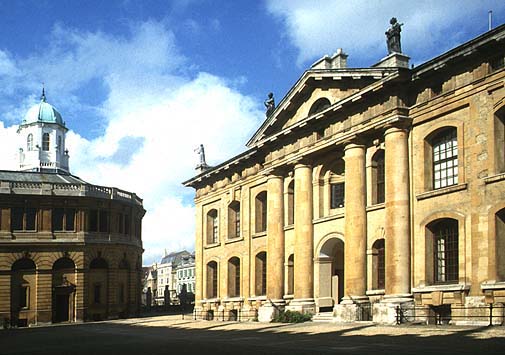

The Clarendon Building was formerly the Clarendon Press. Designed by Nicholas Hawksmoor it was opened in 1715 to house the printing operations of the Press, which was formerly in the basement of the Sheldonian Theatre.
The Clarendon Press became Oxford University Press, now the largest university press in the world.
William Pearce was the son of Rev. Samuel Pearce, one of the founders of the Baptist Missionary Society, and was trained by Clarendon Press Superintendent Mr. William Collingwood. The presses were in the basement.
In his (Pearce's) day, we were printing thousands of Bibles and Prayer Books for missionary society usage. Also, we were beginning our extensive work in Indian languages, which would lead to Friedrich Max Muller's edition of the "Rig Veda" and the other "Sacred Books of the East" in later years of the Victorian era - so Pearce would have found much of his new work (though not his surroundings) familiar.
Dr. Martin Maw, Archivist, Oxford University Press.
July 2004.William Pearce was appointed by the Baptist Missionary Society as William Ward's assistant in the Serampore Printing Office, where he arrived in 1817.
In August, 1818, Lord Hastings abolished press censorship making it possible for missionaries to print in Calcutta. Pearce founded Baptist Mission Press, Calcutta, in the same year.
In 1837 the Serampore Printing Office closed and the work was transferred to Baptist Mission Press, Calcutta.
In the 20th century Oxford University Press, India, was a customer of Baptist Mission Press, Calcutta.